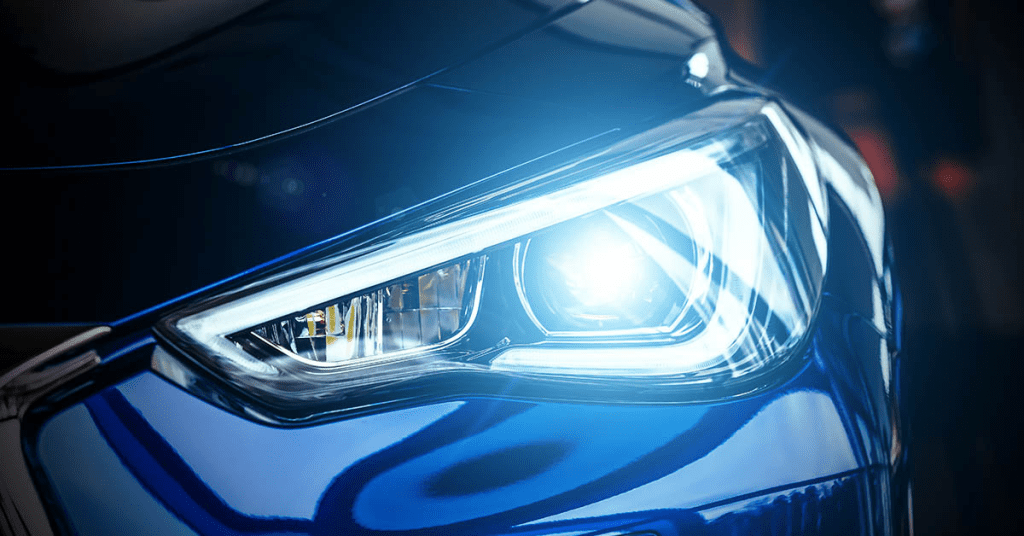In recent years, LED headlights have become the go-to lighting solution for modern vehicles. Known for their exceptional brightness and energy efficiency, they’ve revolutionized nighttime driving visibility. However, for all their advantages, a growing number of drivers believe LED headlights are far too bright. The debate is heating up on roads worldwide, with many raising concerns about safety and comfort. Are these ultra-bright lights really helping—or are they blinding the rest of us? Let’s break it down.
The Rising Backlash Against LED Headlights

It’s not just you—drivers everywhere are complaining about LED headlights. A survey by the RAC found that 89% of UK drivers believe LED headlights are excessively bright, and 85% say glare from these lights has gotten worse over time. And it’s not just a British issue. In the U.S., drivers share similar frustrations, with real-world testing showing that the glare often exceeds regulatory limits.
This rising dissatisfaction isn’t just anecdotal. Experts, engineers, and safety researchers are delving into the issue, finding that the problem may be bigger than we think.
Why Are LED Headlights So Bright?
LED headlights have become popular for good reasons. They consume less energy, last longer, and provide better road illumination compared to traditional halogen bulbs. However, their brightness comes with unintended consequences. Here’s why:
- Concentrated Light Beams: LEDs produce intensely focused beams of light, which improve visibility for the driver but can overwhelm oncoming traffic.
- Cool White Light: Unlike halogen bulbs that emit warm, yellow light, LEDs often produce cooler, bluish light, which can appear harsher to the human eye.
- Misaligned Headlights: When headlights are not properly aligned, they can shine directly into the eyes of other drivers, magnifying the glare problem.
Mark Rea, from the Light and Health Research Center, notes that while not every car creates this issue, about 20% of vehicles are responsible for most of the glare—especially when SUVs or trucks with higher-mounted lights encounter smaller cars.
The Dangerous Consequences of Headlight Glare
At first, the problem might seem like a minor annoyance. But the effects of overly bright headlights can escalate quickly, posing serious safety risks.
- Blinding Oncoming Drivers: The intensity of LED headlights can leave oncoming drivers momentarily blinded. On dark roads, this can slow reaction times, increasing the risk of accidents.
- Eye Strain and Fatigue: Prolonged exposure to intense glare can cause eye strain, headaches, and fatigue, making nighttime driving even more challenging.
- Reduced Speed and Focus: Many drivers report needing to reduce their speed to cope with the glare, which can disrupt traffic flow and lead to road rage or accidents.
For some drivers, the issue has become so unbearable that they’ve resorted to wearing specialized night-driving glasses to counteract the effects.
Misalignment: The Silent Culprit
While the brightness of LEDs is often blamed, experts argue that misaligned headlights are a bigger problem than we realize. Misalignment causes beams to hit oncoming drivers’ eyes directly instead of focusing on the road ahead.

Adaptive headlights—technology that adjusts beam direction based on the car’s position and surroundings—could offer a solution. However, these systems are still a rarity in most vehicles. For now, drivers rely on standard LED setups that can easily fall out of alignment due to improper installation or wear and tear.
The Push for Stricter Regulations
Given the growing complaints, advocacy groups and safety experts are calling for regulatory reforms. In the U.S., the National Highway Traffic Safety Administration (NHTSA) recently received petitions to reassess the allowable brightness of LED headlights.
Mark Baker, president of the Soft Lights Foundation, is among the voices demanding action. “Everyone is mystified by why they are being blinded,” he says, emphasizing that current regulations fail to reflect the real-world impacts of LED headlights.
The problem isn’t limited to the U.S. In the UK, 64% of drivers believe LED headlights are bright enough to cause accidents, fueling the push for global standards that prioritize safety and comfort for all drivers.
A Global Problem with Local Impacts

LED headlight complaints aren’t just a Western issue—they’re resonating globally. From Europe to Asia, drivers are expressing frustration with how these lights affect nighttime visibility. The consistency of these concerns suggests a universal need for better oversight and innovation.
Dr. Lance Uradomo, a gastroenterologist and safety advocate, points out that young, inexperienced drivers may be particularly vulnerable. “We’re seeing more cases of drivers struggling with glare, especially at night,” he explains, adding that these issues can lead to cascading problems, from minor fender benders to serious highway collisions.
Can Technology Solve the Problem?
While the issues with LED headlights are significant, there’s hope on the horizon. Advances in lighting technology could make roads safer for everyone.
Adaptive Lighting Systems
One promising innovation is adaptive headlights, which adjust beam intensity and direction dynamically to minimize glare for other drivers. These systems can detect oncoming traffic and dim their beams accordingly. Unfortunately, they’re still a luxury feature found in high-end cars, meaning widespread adoption could take years.
Better Headlight Alignment

Encouraging drivers to get their headlights checked and aligned regularly can significantly reduce glare. Simple adjustments can make a big difference without requiring costly new technology.
Updated Regulations
With growing pressure on regulatory agencies, stricter rules governing maximum headlight brightness and alignment could help curb the problem. Collaboration between automakers, governments, and advocacy groups will be essential to developing practical solutions.
Tips for Coping with Headlight Glare
Until the broader issues are resolved, here are some tips to help you deal with the discomfort caused by bright headlights:
- Keep Your Windshield Clean: Dust and smudges can amplify glare, so make sure your windshield is spotless before driving at night.
- Use Anti-Glare Glasses: Night-driving glasses with anti-glare coatings can reduce eye strain and improve visibility.
- Adjust Your Rearview Mirror: Flip the mirror to its night mode to minimize glare from cars behind you.
- Avoid Staring at Oncoming Lights: Focus on the road ahead rather than the headlights of approaching vehicles.
Conclusion: Striking the Balance Between Innovation and Safety

LED headlights represent a technological leap forward, offering brighter and more energy-efficient lighting. However, as with any innovation, they come with challenges that need to be addressed. From headlight misalignment to inadequate regulations, the problems surrounding LED headlights are more than just a minor inconvenience—they’re a public safety concern.
As drivers, manufacturers, and regulators work together to find solutions, one thing is clear: safer, more comfortable roads benefit everyone. Until then, keeping your headlights properly aligned and practicing defensive driving can help mitigate the risks.
Bright lights may guide the way, but when they blind others, it’s time to dim the innovation for the sake of safety.


